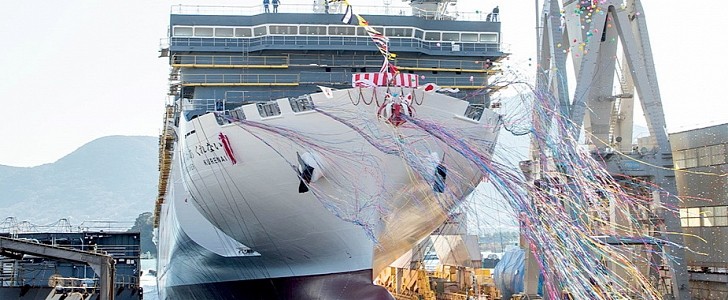The giant Mitsui O.S.K Lines (MOL) has launched a complex study for vessel design, together with the prestigious Tokai University and Akishima Laboratories. The objective is to find the best way of applying advanced aerospace technologies to modern ferries that are powered by LNG (liquefied natural gas) and wind.
MOL is one of the biggest players in the maritime industry that’s committed to operate fleets of modern, green vessels. Its flagship Ishin design has a long history. Ishin is Japanese for “reform” or “revitalization.” It’s also an acronym for "Innovations in Sustainability backed by Historically proven, Integrated technologies.” Ishin-I was the original car carrier operated by MOL, and Ishin-II is the modern generation of ferries.
At the beginning of this year, MOL announced that it was building its first-two LNG-fueled ferries. These green ships would be able to reduce CO2 emissions by 35% compared to the company’s existing fleet.
In addition to being powered by an alternative fuel, these two new ferries will also benefit from wind power. MOL and its partners are working on an innovative hull design that “uses lift from diagonally opposite winds” while reducing wind pressure from the bow and the sides.
To perfect this new hull shape for wind-powered ships, MOL will be implementing the aerospace engineering innovations of Dr. Kota Fukuda, Associate Professor at the Department of Aeronautics and Astronautics, Tokai University.
Dr. Fukuda and his team have already applied this technology to a high-performance solar car (known as the Tokai University Solar Car) and a solar unmanned aircraft developed in collaboration with the King Abdulaziz University in Saudi Arabia. After solar cars and solar drones, these wind-powered ferries are the next to benefit from this aerospace technology.
This new study is also supported by The Japan Ship Machinery and Equipment Association (JSMEA) through its “new product development” program. The two innovative ferries are set to enter service by 2025.
At the beginning of this year, MOL announced that it was building its first-two LNG-fueled ferries. These green ships would be able to reduce CO2 emissions by 35% compared to the company’s existing fleet.
In addition to being powered by an alternative fuel, these two new ferries will also benefit from wind power. MOL and its partners are working on an innovative hull design that “uses lift from diagonally opposite winds” while reducing wind pressure from the bow and the sides.
To perfect this new hull shape for wind-powered ships, MOL will be implementing the aerospace engineering innovations of Dr. Kota Fukuda, Associate Professor at the Department of Aeronautics and Astronautics, Tokai University.
Dr. Fukuda and his team have already applied this technology to a high-performance solar car (known as the Tokai University Solar Car) and a solar unmanned aircraft developed in collaboration with the King Abdulaziz University in Saudi Arabia. After solar cars and solar drones, these wind-powered ferries are the next to benefit from this aerospace technology.
This new study is also supported by The Japan Ship Machinery and Equipment Association (JSMEA) through its “new product development” program. The two innovative ferries are set to enter service by 2025.








